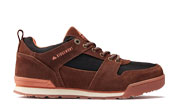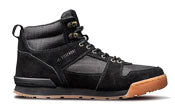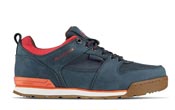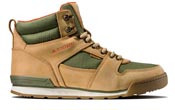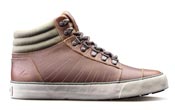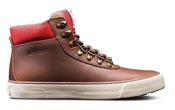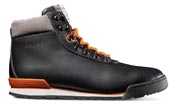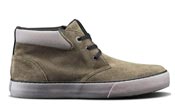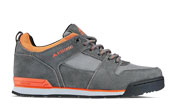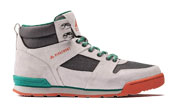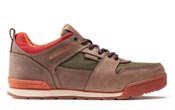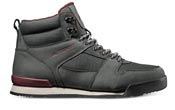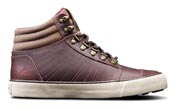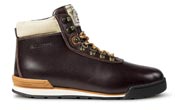Shoe Care
Hiking Boot Care: Best Way to Clean and Dry Hiking Boots
Why it’s Important to Maintain Your Hiking Boots
Your hiking boots are your best friend when you’re on a hike. Not only do they protect your ankles - if you happen to lose your footing and fall – but they (together with your hiking socks) also protect your calves from being bitten.
This means that just as they take good care of you, you must take good care of them so that they are able to continue to protect you for years to come. In this article, we’ll give you a number of boot care instructions which will help you to properly take care of your hiking boots.
Breaking in your New Hiking Boots
The time needed for breaking in hiking boots depends on a number of things. For example, if you have just bought full-grain leather hiking boots, you’ll probably need to spend a lot more time breaking these in because the material is much tougher than nubuck leather.
Also, the time needed for breaking in hiking boots depends on how you walk. If you’re heavy on your shoes, the breaking-in process will take a lot less time than for someone who doesn’t have such a heavy gait.
The bottom line is that you before you embark on a long hike, you need to be sure that your boots are comfortable to walk in for long periods of time. Footwear (not just hiking boots) that is not comfortable may cause blisters. Remember that these boots are the only pair of shoes that you’ll have on the trip so you need to make sure that you can wear them throughout.
If you wear shoes, for a long period of time, which don’t fit you properly, you could develop bunions that need surgery to fix.
Waterproofing your Hiking Boots
Most hiking boots are already waterproof so you won’t have to worry about waterproofing your hiking boots until you’ve had them for a good number of years and they’ve seen you through many hikes. Make sure that you care for your new hiking boots well so that you won’t need to re-waterproof them for a while.
Cleaning and Maintaining Your Hiking Boots
It’s vital that you clean as well as maintain your hiking boots on a regular basis because if you hike with boots that are covered in dirt, every time that you flex your feet this dirt will get into the leather. This acts like sandpaper and slowly files down the leather of the boot.
Also, mud soaks the moisture from your boot and speeds up the ageing process, so you’ll see cracks appearing on your boots sooner rather than later. So, rather than just throwing your mud-caked boots into the back of your wardrobe at the end of the hike, here are some easy-to-follow tips on how to clean hiking boots.
After-Hike Cleaning Tips
Step 1: Brush off any dirt
Remove the laces and brush off any dirt with a soft, dry brush. Often, when you’ve completed quite a muddy hike, some of the dried mud comes off easily.
Step 2: Dry your hiking boots
Stuff a towel into the boot to dry up any moisture on the inside of the boot.
Step 3: Wash the outside of your boot
Rub specially formulated boot cleaner into the outside of the boot with a damp cloth. When you’re done, rinse the boot under warm running water. Don’t dunk the boot into a basin of water as this will just waterlog the boot and not get it clean.
Step 3: Wash the outside of your boot
To dry hiking boots, stuff them with newspaper and leave them inside. Make sure that they’re not in the sun as this will damage the leather. When the newspaper is damp, replace it with new paper as this will promote the drying process.
Can you put hiking boots in the washing machine?
You must not put your hiking footwear into the washing machine as this will damage the integrity of the boot. All soaps and detergents are not good for hiking boots, which is why one uses special boot cleaner to get your hiking boots into tip-top shape.
How to stop hiking boots from smelling
To stop your boots from smelling, make sure that you buy good-quality hiking socks that will give your feet the chance to breathe while you’re on the trails. Most hiking socks are made out of wool and, although they are pricier than their synthetic alternatives, they regulate your feet’s temperature.
Also, you can spray deodorising spray into your boots (even when they don’t smell) and make sure that you thoroughly dry your boots – after every hike – so that you get rid of any signs of moisture as this could lead to your boots smelling.
The Best and Fastest Way to Dry Your Hiking Boots
The best way to dry hiking boots is, as we mentioned previously, to stuff them with newspaper and let the paper soak up any moisture. However, if you’re running short on time, you can put them in front of a fan – not a heater as the heat will damage the leather.
How to Care for Leather Hiking Boots
In terms of caring for your hiking footwear, you should regularly apply conditioner to the leather uppers to feed and moisturise it. Dry leather is more prone to cracking than moist leather is, so you need to keep the leather in good condition. However, make sure that the conditioner that you apply doesn’t soften the leather. The last thing that you want is for your boots to become soft – you want them to remain rigid so that they provide you with the support that you need.
You are able to wash the laces in the washing machine and remember to replace them with heavy-duty laces if you need to as your laces will lend an extra level of support to your boots. Laces that are designed for running shoes aren’t strong enough to fasten your boots securely and will snap, so make sure that you get the right replacement laces.
How to maintain your leather hiking boots waterproofing
Make sure that your boots are dry
Before you apply the waterproofing cream or wax to the leather uppers of your boots, make sure that they are dry as this will ensure better absorption.
Apply the waterproofing cream or wax
Remove the laces. With one hand inside the boot, apply the wax or cream to the leather upper using either the inbuilt sponge or a soft cloth. Make sure that you get good coverage on the boot and make sure that you don’t forget to apply the mixture on the seams.
Something to be aware of is that if you decide to use the wax, it needs to cure on the boot; however, this doesn’t happen with the cream. So many hikers prefer the cream as it doesn’t take as much time.
How to reduce leather hiking boot cracks and dry leather
To make sure that you reduce leather boot cracks and instances of dry leather, apply specialised oils and conditioners to your boots. A word of caution: ensure that whatever you apply to your boots doesn’t soften the leather because you want your boots to be as rigid as possible.
To keep your boots in top condition, we recommend that you buy our Ridgemont Leather Boot Wax. Made from triple-filtered beeswax, natural lipids and seed oils, it is non-toxic and only requires an occasional application for it to be effective. Follow this link to order yours!
How to best store your Hiking Boots
In terms of how to store hiking boots, the big thing is that they need to maintain their shape. This means that you need to store them well. We recommend that you store your boots on a shoe tree when you’re not wearing them.
Also, make sure that when you store them that they are clean and dry because any dirt that is left on the boots will eventually start to destroy the leather of the boot.
CTA: Proper care of your hiking boots is integral to making sure that your pair remains strong and sturdy for years to come. Interested in purchasing a pair for yourself? Follow this link to view our entire catalogue.

